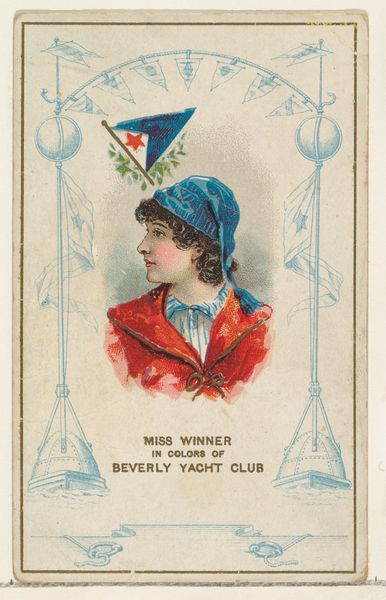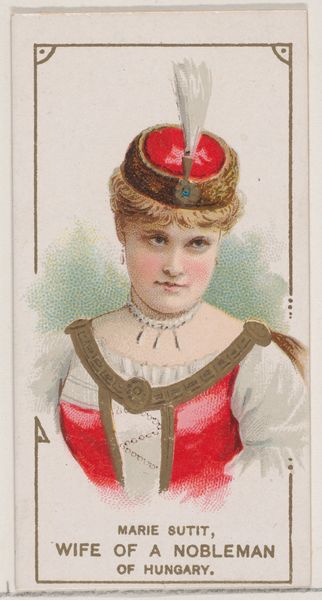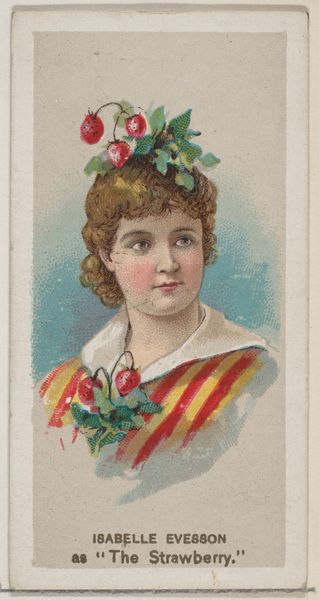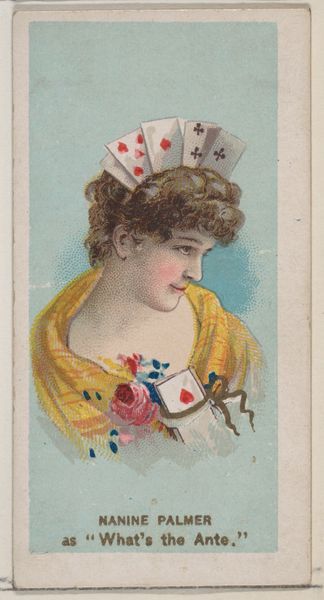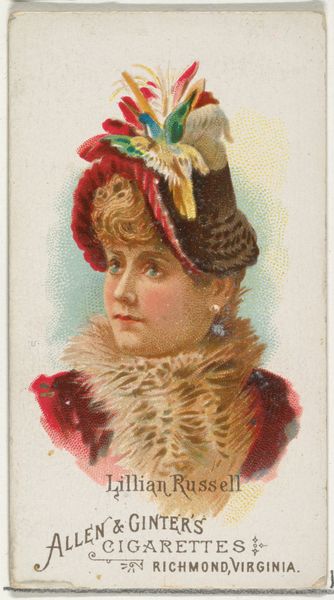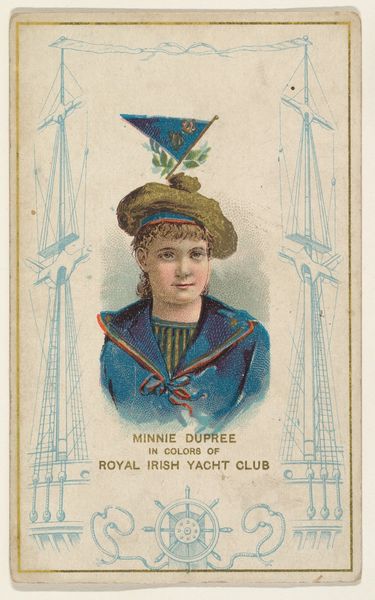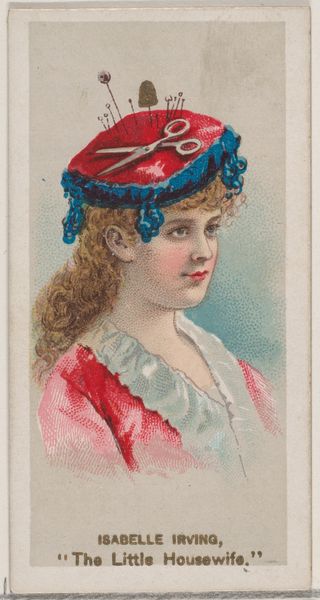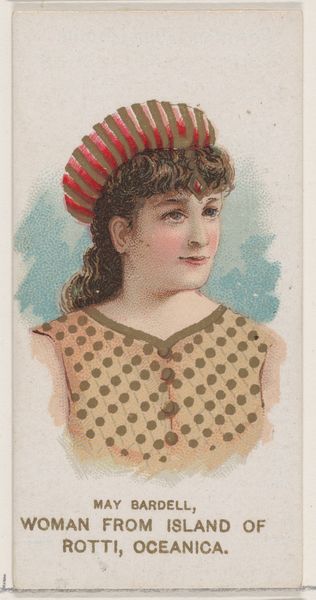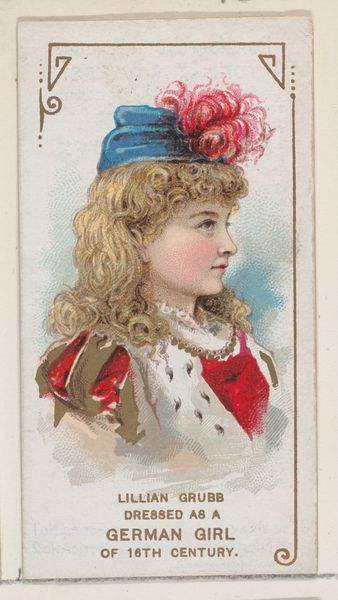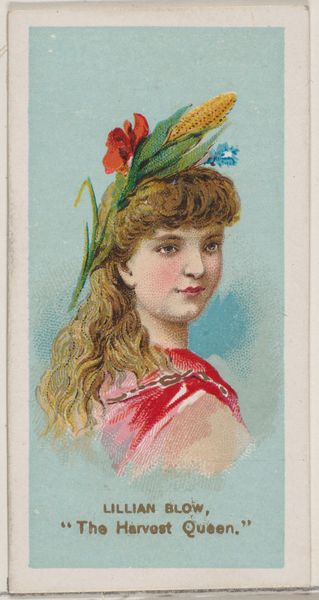
Agnes Huntington in Colors of the Berliner Yacht Club, from the Yacht Colors of the World series (N140) issued by Duke Sons & Co. to promote Honest Long Cut Tobacco 1890
drawing, print
portrait
drawing
16_19th-century
impressionism
19th century
Dimensions: Sheet: 4 in. × 2 1/2 in. (10.1 × 6.3 cm)
Copyright: Public Domain
Editor: Here we have "Agnes Huntington in Colors of the Berliner Yacht Club," a print from 1890 by W. Duke, Sons & Co. What strikes me is the formal portrait style, but also the way the central figure is framed by nautical symbols. How do you interpret this work, and especially, how does its original context inform its meaning? Curator: This piece operates as both portraiture and advertisement, highlighting the burgeoning commercialism of the late 19th century. We must consider the power dynamics at play. Tobacco companies often used images of women to promote their products, associating smoking with beauty and sophistication while simultaneously marginalizing women's roles in society. What does it mean to depict Agnes Huntington within the "colors" of a yacht club? Is this a commentary on class, access, and who gets to participate in leisure? Editor: That's fascinating. I hadn't considered the way the image sells more than just tobacco, but also a certain lifestyle or aspirational identity. So, is Huntington's portrait essentially a tool for marketing a specific kind of exclusivity? Curator: Exactly. Think about the rise of consumer culture at this time, where owning specific goods or aligning yourself with certain activities becomes a way to signal status. The image of Huntington, associated with the elite Berliner Yacht Club, reinforces these values. How might we analyze the gendering of such leisure activities at this moment in history? Who was included and who was excluded? Editor: It’s interesting to see how seemingly simple images can be so deeply intertwined with societal issues of class, gender, and identity. This really gives me a lot to think about. Curator: Indeed, examining the historical and cultural context allows us to understand how art—even in commercial forms—reflects and shapes the society from which it emerges.
Comments
No comments
Be the first to comment and join the conversation on the ultimate creative platform.
